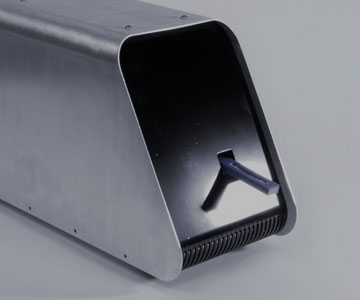FROM: Napkin sketch
TO: Integrated prototype, bench testing units, patent
From 2011 to 2016, in2being worked with an early-stage medical technology startup that wanted to develop an integrated device for testing blood quality.
The startup company had a novel concept for measuring blood fragility—how susceptible it is to hemolysis. Hemolysis is the breakdown of red blood cells (RBCs) with an accompanying release of hemoglobin, a protein within RBCs.
The startup’s technology had potential for use in clinical settings and in assessing the quality of stored blood:
- Although hemolysis is a process that occurs naturally as blood cells are continuously replaced, excessive hemolysis is often a sign of an underlying condition or illness.
- Hemolysis can also result from the implantation of cardiac devices (e.g., ventricular assist devices (VADs), which supplement or replace the function of a failing heart).
- Mechanical fragility (MF)—which can be defined as susceptibility to hemolysis caused by mechanical means—is a measure of the quality of stored blood (e.g., in blood banks).
The startup company did not have the capabilities to turn their concept into a finished device, so they reached out to in2being for help.
The Starting Point: A Napkin Sketch
The client had a solid concept for the device they wanted to develop but little beyond that. They planned to take advantage of the full breadth of in2being’s med-tech consulting to produce an integrated machine for blood quality testing.
The Process: Full-Service Consulting
During this lengthy engagement, in2being provided the following services:
- Design: We were responsible for the device’s electrical and mechanical design and created its operating software.
- Prototyping: We created early prototypes and, ultimately, a prototype of an integrated blood quality testing system.
- Verification testing: in2being carried out design verification testing according to Food and Drug Administration (FDA) good laboratory practices (GLPs).
- Vendor management: in2being initiated and managed relationships with parts suppliers for the client device.
- Intellectual property development: We assisted the client with a successful patent application.
Throughout the engagement, in2being provided project management services and helped train the client team regarding the medical device development process.
The Results: An Integrated Prototype, Bench Testing Units, and Patented Technology
As the project progressed, it became clear that extensive laboratory testing would be necessary to demonstrate the device’s effectiveness. After we helped them establish laboratory bench testing units, they pivoted from their original intention to develop an integrated device. Instead, they began marketing laboratory testing services—using the subsystems we developed for them.
Their shift reflects a decision many med-tech innovators face with ideas for diagnostic devices. The client could have developed an integrated device but would have needed several clinical studies to prove its efficacy. Pivoting to laboratory testing was a pragmatic choice.
Ultimately, in2being helped the startup:
- Develop a prototype of the integrated device
- Create bench testing units
- File a patent
This amply demonstrated the value of the client’s technology. The startup company was subsequently acquired by a larger company, and their innovation is in use today.
If you’re a med-tech pioneer with ideas for a new medical device, in2being can help you translate your ideas into solid, marketable technology. Contact us today to learn more about our services and how we can turn your vision into reality.

